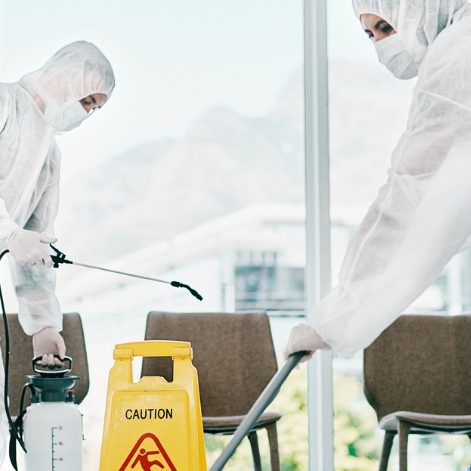As COVID-19 wanes and people begin meeting again, what should planners know about precautions venues must take to ensure clean, safe spaces? With many convention centers serving as temporary field hospitals, what disinfection standards should planners insist on?
Kenneth Bickerton is vice president of industrial hygiene and safety for Phase Associates LLC, a New Jersey-based consultancy for environmental, occupational health and safety challenges. He offered insight into how venues can make sure their spaces are ready for meetings.
What is the Cleaning and Disinfection Process?
Bickerton identified three levels of potential concern:
- Class 1: No one in the venue has been infected with COVID-19, and no one who has visited has been exposed to anyone who is ill.
- Class 2: Someone in the venue has had recent contact with an infected person.
- Class 3: An infected person has recently been in the building.
Class 1 requires only typical cleaning procedures, but for added protection, high-touch surfaces should receive special attention. In the event of Class 2 or 3, the protocol is to pinpoint exactly where the infected person(s) might have been in the venue, so those areas can be flagged for stepped-up cleaning and disinfection.
Disinfecting requires an EPA-approved product. Although it is not coronavirus specific, the most commonly used disinfectant has been used on SARS and MERZ viruses in the past.
“Surfaces need to be wet with that agent for a specific amount of time for it to fully disinfect. That could run from a minute to several minutes,” Bickerton said.
The procedure for cleaning electronics is different in that damage can occur if the wrong agents are used. The CDC suggests using ethanol- or isopropyl-based alcohol with a concentration of more than 70 percent. Diluted bleach is also an option, but it must be used immediately, as it loses effectiveness with exposure to air.
What Does Disinfection Entail?
Each class requires a different level of cleaning and disinfection. The higher the class, the more protective measures are needed.
- Class 1: Clean all high-touch surfaces while wearing an N95 mask and disposable gloves.
- Class 2: Clean all high-touch surfaces and areas where an infected person(s) had recently been, while wearing an N95 mask, coveralls, booties and two pairs of disposable gloves; decontaminate any tools used (e.g., buckets, mops, brooms).
- Class 3: Same as Class 2, plus open windows and doors for 24 hours, if possible.
See also: How to Protect Your Attendees from Coronavirus
For Class 1 cases, Bickerton says an in-house janitorial crew will suffice. In Class 2 and 3 cases, where the chances of contracting the virus are much higher, Bickerton recommends a professional experienced in bioremediation and the elimination of biohazards, such as bloodborne and coronavirus-specific pathogens.
An important point to remember: Even the coronavirus does not live forever. If it’s been more than seven days since the person who was infected visited the facility, Bickerton says Class 2 or 3 cleaning and disinfection is not necessary.
How Should Planners Prepare?
Asking the right questions is the key to reassuring yourself and attendees that venues are taking the appropriate measures to provide a clean and safe meeting space.
More: Keep Calm and Plan On: How to Prepare for a Post-pandemic World
“For instance, what practices, based on local and federal guidance around cleanliness, has the venue put in place?” asks Tina McLaughlin, CMP, senior director of operations for American Express Meetings & Events. “Is the venue practicing deep cleaning of rooms and public spaces? What is their approach to food and beverage accommodations? Will they be offering less populated dining spaces? Will they be offering plated or buffet meals? These are all very important considerations that impact the safety and health of event attendees.
“As resilient as our industry is, we do need to be prepared for a number of new meetings options and configurations borne from this pandemic,” she continued. “This includes more virtual and hybrid meetings, small event sizes, and a reconsideration of regional and national meetings.”




